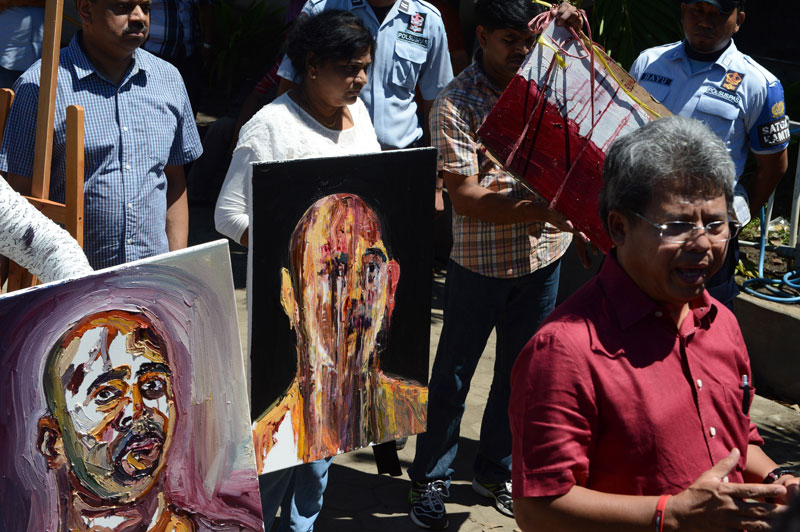At 12.30am last Wednesday morning, a firing squad marked white crosses over the hearts of Australians Andrew Chan and Myuran Sukumaran, alongside six other convicted drug smugglers, and shot them dead. Only three of the 12 executioners had been given live rounds. Hours later Angus Trumble, the director of the National Portrait Gallery (NPG) in Canberra, announced that a portrait of the Indonesian President Joko Widodo by Adam Ferguson – a finalist in the gallery’s national photographic portrait prize – would be removed. He cited ‘the risk of damage to the work of art’ by the general public, but was surely also influenced by the Australian government’s decision to cut diplomatic ties temporarily with Indonesia.
The removal of the portrait is only the latest in a string of incidents in which images have been manipulated to make a political point about the ‘Bali Nine’ crisis. On 24 October 2014, another portrait of Widodo from the same studio session graced the cover of Time Magazine with the headline ‘A New Hope’, a puff piece describing Widodo as the strongest chance for a refreshed, democratic Indonesia. The image is one of classic photographic rhetoric and symbolism: an ‘unflinching’ portrait with strong exposure; an ‘honest’ depiction with wrinkles and signs of ageing; with a single light source as if to suggest ‘a light at the end of a tunnel’. Six months later, Widodo’s approval ratings were in the negatives. He needed a symbolic act to reinvigorate his image, to be seen as a ‘strong’ leader – calls for clemency from Australia’s Prime Minister Tony Abbott and Foreign Affairs minister Julie Bishop for two Australians imprisoned for trafficking illegal substances and sentenced to death were formally received, and rejected.
During his decade in jail, Myuran Sukumaran had become an accomplished artist. The practice had been therapeutic, given him an outlet for his emotions. Chan had chosen Christianity instead. On 28 April, the finished works were brought out by Sukumaran’s family to show to the press – a self-portrait in the style of his artist friend, Ben Quilty, painted in thick strokes as if his face is melting in sorrow. The Indonesian flag dripping with blood. A human heart, signed by Sukumaran and Chan, as well as the other inmates sentenced to execution. Their symbolic messages were all quite apparent and they generated fodder for social media posts and general press slacktivism.
In the past, the families of Sukumaran and Chan had been driven directly to the port to travel to the prison island of Nusakambangan. For their last trip, the Indonesian government dropped them off with a couple of hundreds of metres left to walk, a cruel photo opportunity as they were jostled through a scrum of journalists, photographers and camera operators, all of whom were being herded by a pack of police dogs. In the melee, Sukumaran’s sister Brintha fainted and then was carried the remaining steps to the port. Her head tilts backward in exhaustion and suffering, in what the popular media is already labelling as ‘the image’ of the event. Perhaps it can replace the image of Widodo in Canberra and try to remind us of the hollow feeling of an event too complex and brutal to be properly depicted.




